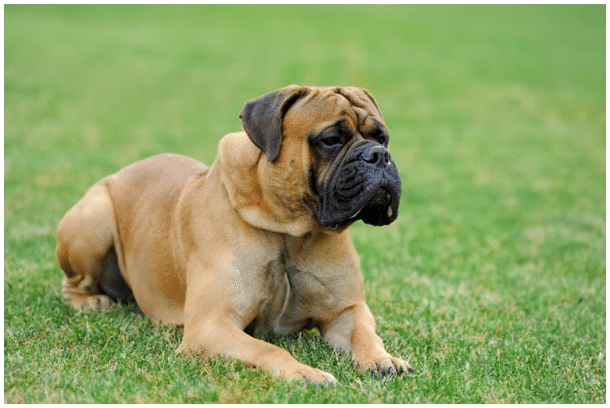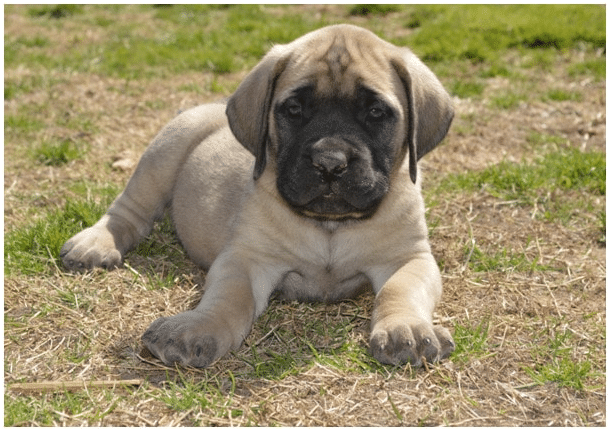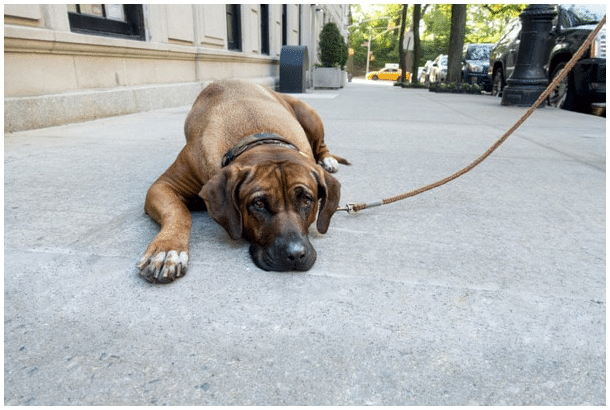The English Mastiff is known for its massive size and strength, but what about its agility? Do they have what it takes to keep up with the more nimble breeds?
English Mastiffs are not considered agile dogs due to their large and heavy build. They are known for their strength and courage, making them excellent guard dogs, but may not excel in activities that require speed and agility.
There are still a lot of benefits to training your English Mastiff in agility, even if they will never be truly great at it. It provides them with some great exercise and fun, plus it can boost confidence and help them learn to pay attention and listen better.
Are English Mastiffs built for agility?

The simple answer is no. Some wise pet owners have said English Mastiffs have two speeds: slow and nap. There’s even a story that went viral a while ago of an English Mastiff competing in an agility competition and taking it real slow.
Everyone was encouraging him, and he and his owner became fan favorites, although it was clear he wasn’t going to win.
That kind of spirit can make it fun to train a giant size dog in agility, even if they are sure to do poorly. It can be an exercise in just going for it for the sake of the fun and spirit of the activity.
English Mastiffs have a massive size and are the largest of the giant breeds of dogs. They have a natural protective instinct yet they generally display a calm temperament.
While they have a rather muscular body, they carry a lot of weight around with them. They can reach speeds of up to 28 mph (45kph), but they rarely work themselves up to that speed.
Due to their bulky build, this popular breed tends to prefer walking and jogging. However, even walking a long distance can be tiring, and three miles tends to be their limit.
The critical thing to note for their health is that their bulky build puts a lot of pressure on their joints. While they need daily exercise, their sheer size makes it hard to do anything too rigorous. Lower-impact exercise such as swimming can be a good option.
A dog of this size may not be the best choice for a first-time dog owner, as their massive size can sometimes be difficult to manage!
At what age should an English Mastiff start agility?

Generally speaking, it’s going to be hard to get your English Mastiff going on the agility course. They are slow and naturally lazy dogs, making them highly unlikely to do well on the course.
However, some owners still want to keep their Mastiff active to keep them healthy. There are many options for exercise, but just because they aren’t good at agility training doesn’t mean they still can’t do it for fun.
You can start a Mastiff on flatwork and the more manageable parts of agility as early as three to six months, but make sure to keep them away from the more complicated stuff.
“Agility is tough on the joints, and English Mastiffs are prone to joint problems as they get older.“
Especially when they are still growing, it is crucial not to overstrain their legs. That means none of the jumping or going up and down parts of the agility course.
For safety, you shouldn’t start your Mastiff on fully agility courses until they’re at least 18 months old. This is when their bones are fully developed, and they are less likely to hurt their joints.
Is agility training good for English Mastiffs?
Agility training is an excellent form of exercise, regardless of the dog breed. Of course, you have to be careful with overworking the joints, and that’s why English Mastiffs younger than 18 months should not attempt the entire course, but other than that, it is still healthy for them.
However, you should not expect your English Mastiff to be great at agility courses. Their bodies are not built for dexterity, plus they tend to move slowly and with low energy.
They tend to be a bit lazier, though, so exercise can become a bottleneck for their health. Getting them up and doing an activity like agility is good for their overall health. Consistent training is paramount, as they need constant motivation to keep moving!
Agility training has many other benefits, including training for attention and listening, building confidence in your dog, especially if you go to competitions and meet other dogs and owners, and lots of other social skills and health benefits.
Is there anything that can slow down my English Mastiff’s agility?

I wouldn’t worry about this too much in the sense that almost everything about an English Mastiff works against their agility. They are cumbersome, carry a lot of weight around their abdomen, and usually have a low energy personality.
Thus, it is doubtful your English Mastiff will ever reach the peaks of agility that other dog breeds do. That being said, diet and exercise, making agility exciting for them, and other techniques can all improve their abilities.
“They can enhance their agility levels in the same ways as other breeds; they just have more limited potential.“
It can also be helpful to train the footwork at an early age, like three to six months. Just be careful not to overdo it, as the English Mastiffs are very vulnerable to injuring their joints while growing up.
Does agility training build confidence?
Agility training can be excellent for dealing with a whole host of confidence problems in dogs. An English Mastiff probably won’t do well in the competitions. However, if they are encouraged and given lots of positive feedback around other people and dogs, it should do loads for their confidence.
Confidence comes from feeling in control and understanding the situation around them. Being surrounded and interacting with other people will typically have a positive effect on your dog.
This is where a basic obedience training course will help, as they interact with other dogs while learning good behaviors.
They’ll feel they have a purpose and know what’s going on and what they should do. Having this level of confidence helps make them an excellent guard dog.
As the most powerful mastiff breed, early training, and socialization will ensure they develop a gentle temperament that is best suited for families with children.
How to train your English Mastiff to be agile?
You can do most of the same training as other dogs when training for agility, but just be aware that your English Mastiff will never do particularly well at it. Over time, they should still improve from where they began, but their overall potential is low.
Training either involves working at an agility training facility, where they will have the whole course set up for practicing and even give out lessons, or you can do it in your backyard.
There are easy-to-set-up kits you can buy online with all the basics for your backyard.
Once set up, you can use treats and lots of vocal encouragement to get your English Mastiff started on the different obstacles, showing them how to do it, then giving them treats when they get it right.
What type of Agility Equipment should be used?
The tunnel, jumps, and weave poles are the main ones for training at home. Generally speaking, jumps, ramps, and weave poles are all going to pose difficulties for your Mastiff. These gentle giants struggle to maneuver well, and anything involving height poses a problem for their joints.
Be sure to provide soft landing sites and not to overstrain your Mastiffs body. They can still do most of the obstacles in their own slow time and gain a lot of the exercise benefit for it.
“Jumping and up and down movements are the hardest on their bodies. Save these for last, if at all.”
If you are not planning to enter competitions, you don’t have to do the more challenging versions of many of these obstacles. You can instead just do what’s fun for you and your Mastiff.
How can I teach my English Mastiff agility at home?

You can purchase a dog agility equipment kit for your backyard and practice with your English Mastiff.
Proper training and the use of a lot of treats and positive reinforcement will encourage them to get excited about the obstacles. Although you don’t want to overdo the goodies, you can move to a clicker or similar strategy to help things along if you are training them often.
Remember, agility is just a playful activity for some exercise for your Mastiff. They’re unlikely to get any good at it, so don’t be disappointed if they aren’t making much progress. Slow and steady works great for them.
You’ll also be teaching them to listen to you, increased attention span, and other benefits beyond just exercise. Agility stimulates their minds too, preventing mental frustration that can lead to destructive behaviors.
Final thoughts
Whether you are an experienced owner or not, be careful about pushing your Mastiff too hard. Your English Mastiff is unlikely to win any agility competitions, but that doesn’t mean it can’t be fun for you and your pet.
Exercise, training, and general stimulation are all benefits both you and your Mastiff can gain from a bit of agility training.


